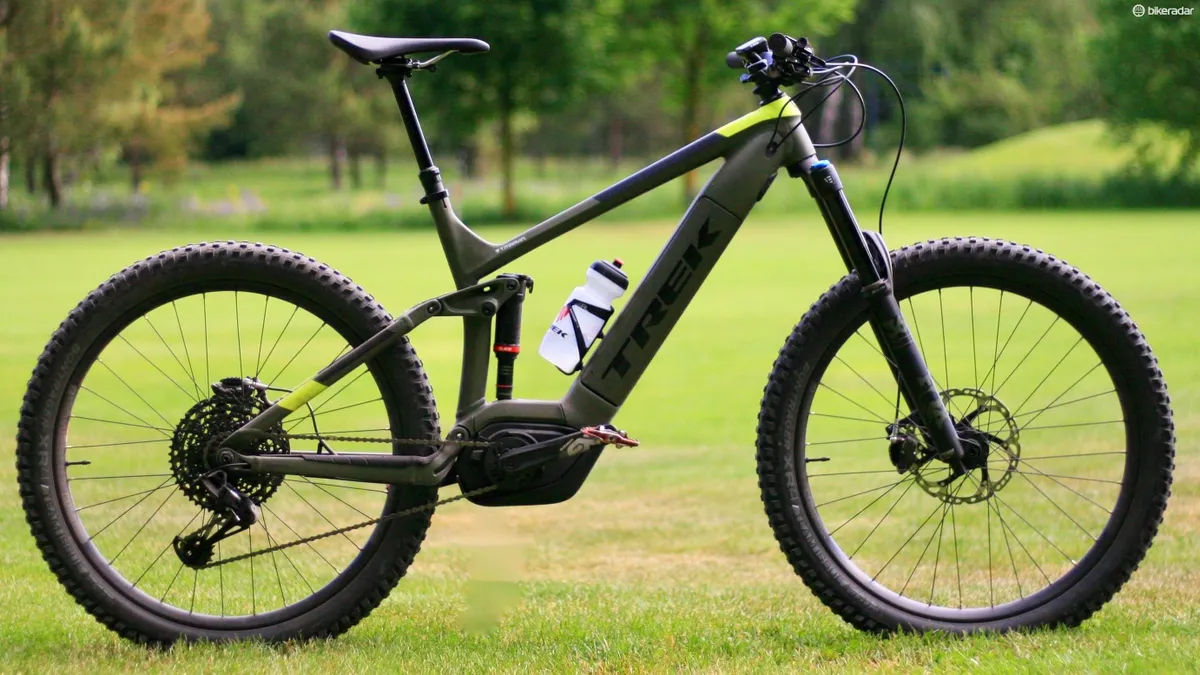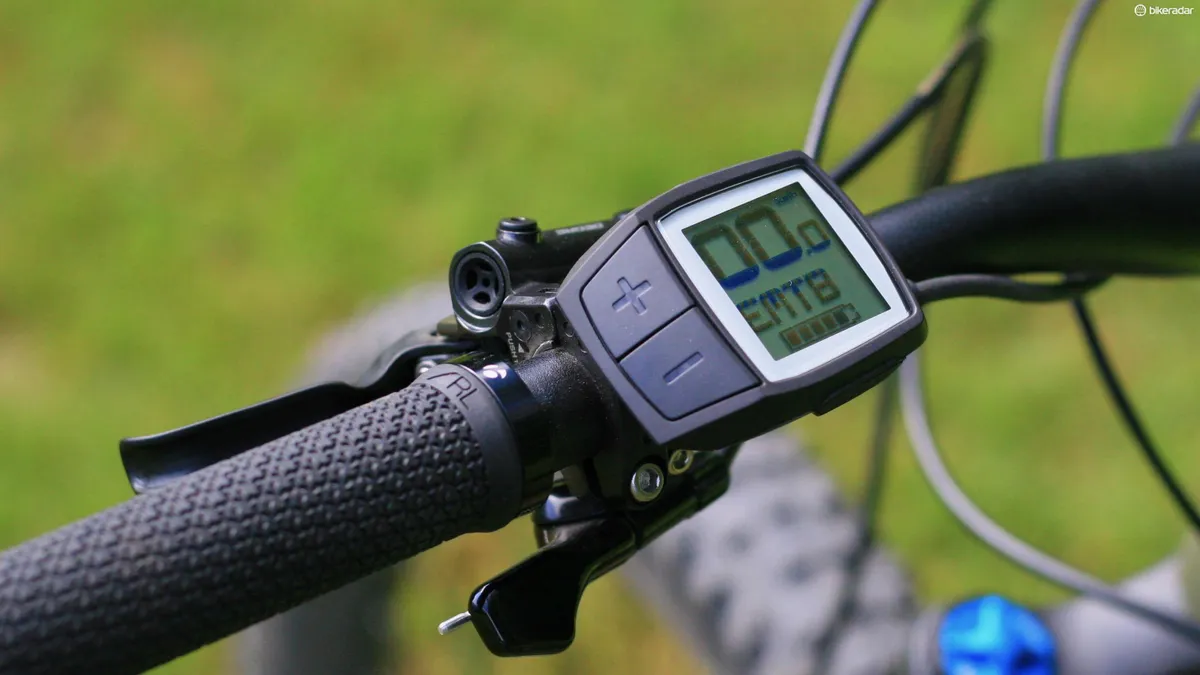Since Trek updated and expanded its Powerfly range of e-MTBs last year, it has refined its frames, adding tyre clearance and battery integration, and is now offering carbon versions of the longer travel LT Powerfly.
Trek argues that riders want this better integration, giving cleaner lines and yet also want a bike that’s easier to live with.
The new system is a side-loading 500Wh Bosch PowerTube battery, which integrates the battery with a handle and a cover, to keep the whole shebang looking smart. Trek calls this its ‘Removable Integrated Battery’ or RIB for short.
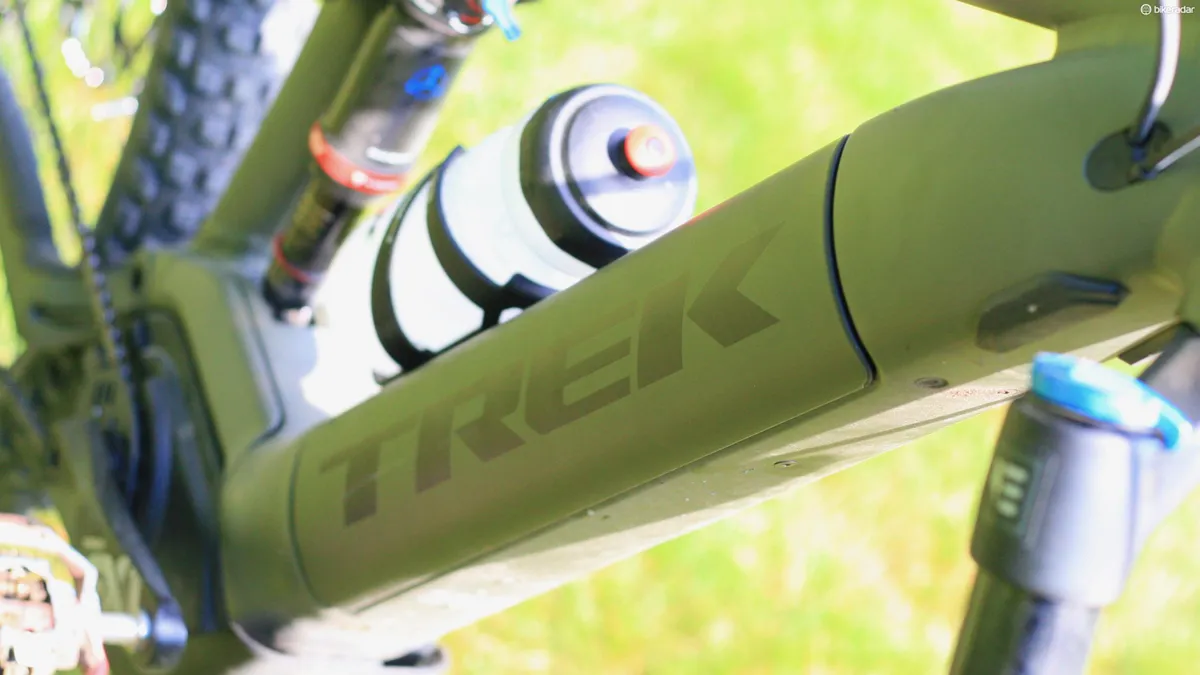
Trek went side-loading because it believes the majority of riders lay their bike on its non-driveside when removing the battery — as such the battery pops out of the driveside side of the down tube.
This is also likely to be cleaner than the underside of the down tube. The little carry handle that pops out also makes carrying it that little bit easier. It’s the little things, huh?
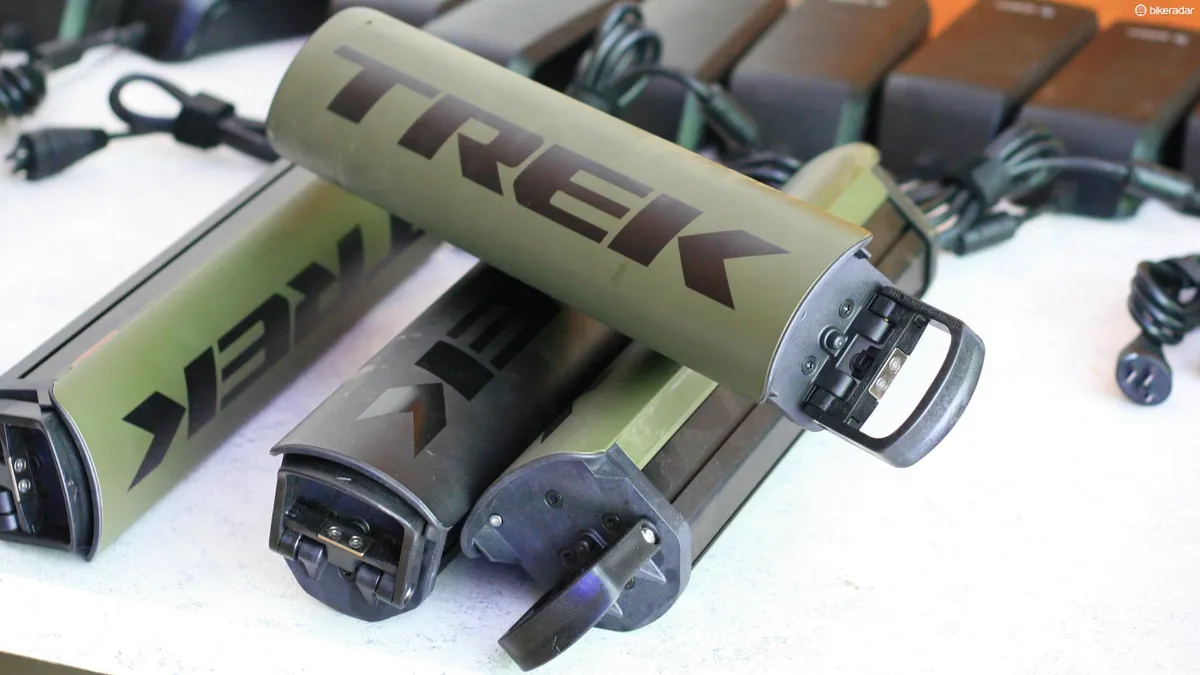
Trek has also increased rear-tyre clearance out to 2.8in on its full suspension models. These bigger tyres are there to make the most of the power available when climbing and to give extra security when descending.
Powerfly Range
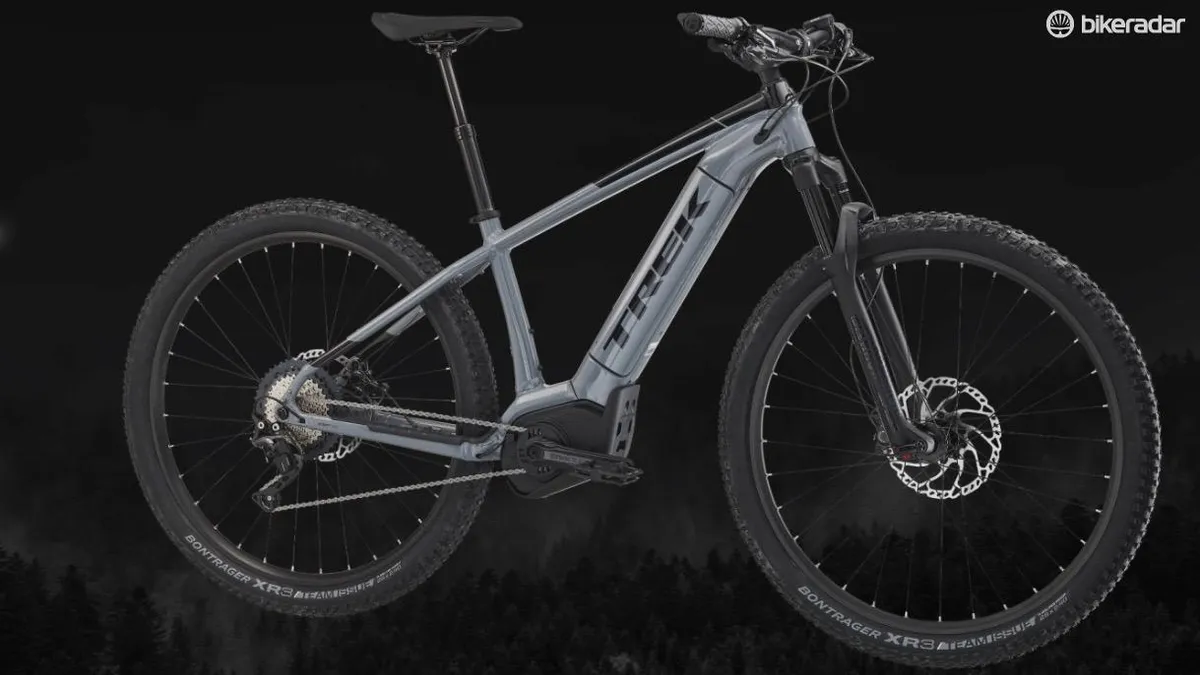
The new battery design will be found across almost the entire range, which has had quite the overhaul.
The Powerfly full suspension range includes the 130mm FS variant for riders looking for the traditional e-MTB experience — long days in the hills, plenty of accessibility to the countryside.
Top-end 9 and 7 models have 2.8in tyres, while the 5 and 4 come with 2.35in tyres, on the 650b wheels.
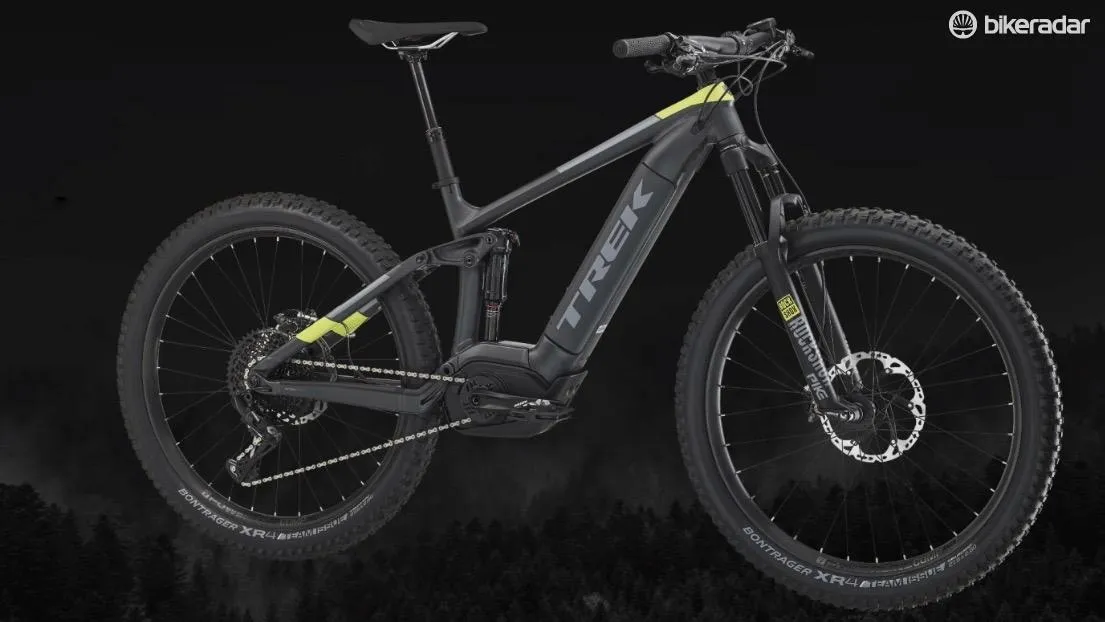
Then there's the Powerfly LT. This has 150mm of frame travel with 160mm forks and, as you’d expect, is a more gravity-orientated ride. New to the range though is the addition of a carbon frame to the LT series. I’ll delve into more details about this bike later.
The hardtails still exist too. The line-up includes the Powerfly Sport hardtail and comes with fenders, a rack mount, lights and kickstand. Trek calls this its SUV bike, and I reckon it could be perfect for those commuters who have to tackle unpaved cycle paths on their way to work.
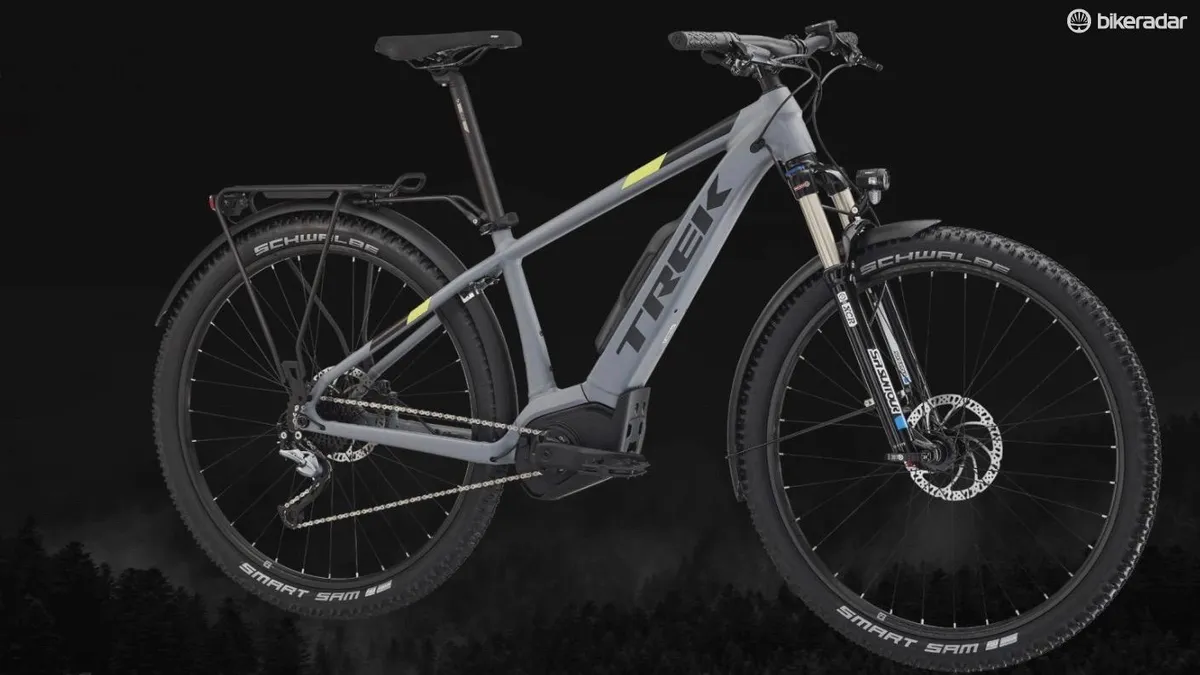
The regular hardtails come with 29in and 650b options, with the entry-level model (and the Sport model) having the older semi-integrated battery design.
There will also be a number of women's specific models: two full suspension (non-LT) and three hardtails. These go down to an XS 14in size, with a lower stand-over height on the Medium, Small and XS frames.
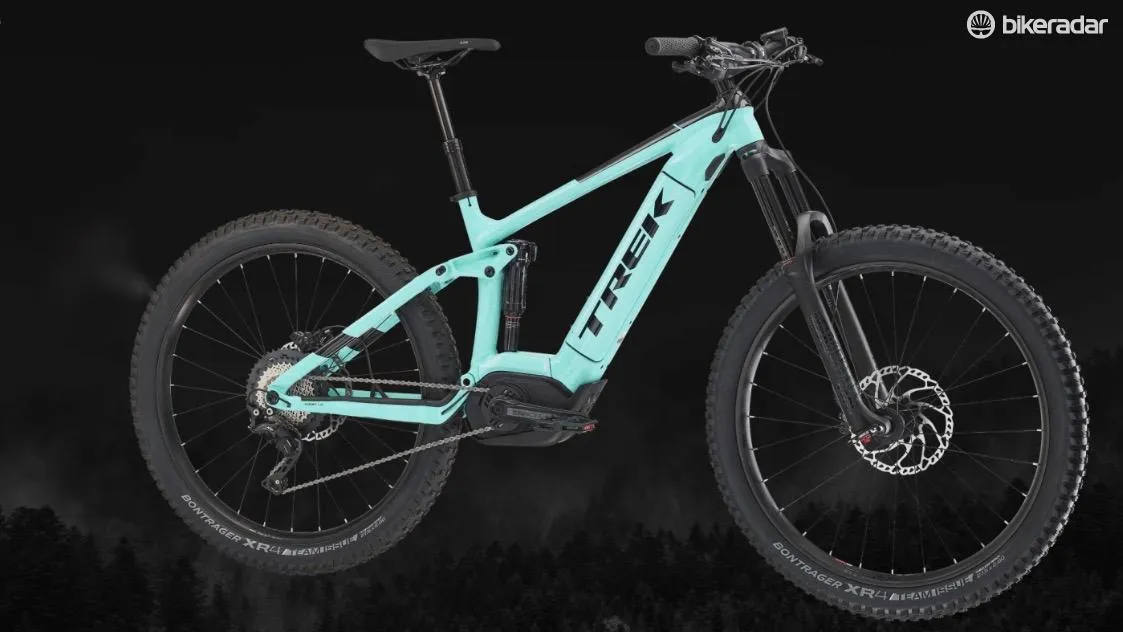
Trek Powerfly European pricing
- Trek's Powerfly hardtails range from £2,250 to £3,400 / €2,499 to €3,799
- The Powerfly Sport is £2,400 / €2,699
- 130mm travel full-suspension models (Powerfly FS) range from £3,200 to £5,000 / €3,499 to €5,499
- LT models (Powerfly LT) range from £3,600 to £7,250 / €3,999 to €7,999
- US pricing TBC
Trek Powerfly LT range details
The LT version of the Powerfly is probably going to appeal to most riders — after all, if you have a motor to help on the climbs, you might as well take the option of extra travel too.
There are five models in the range, three with an alloy frame and two with a carbon front triangle (but alloy back end). The cheapest LT 4 model only has the semi-integrated battery option. I had access to the LT 9 Plus for a couple of days, so check out my first ride review of the bike.
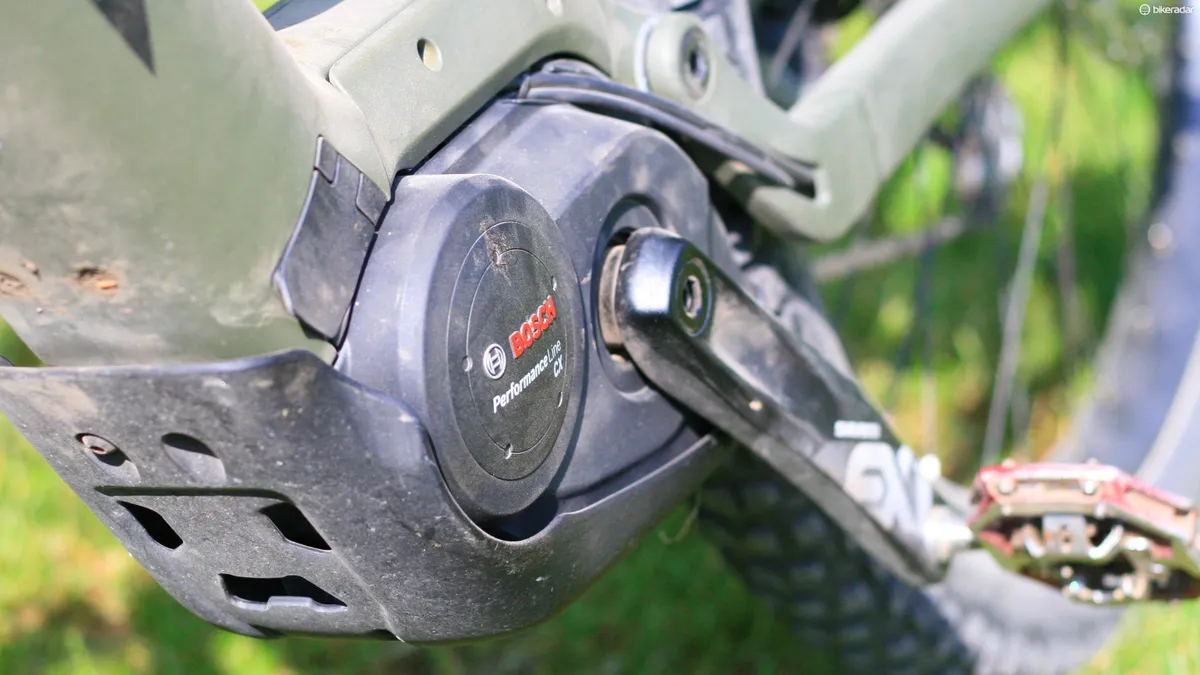
I wasn't surprised to see Trek adding to the Powerfly range with a couple of OCLV carbon models in its flagship LT range.
Trek says the use of carbon drops 650g in weight from the bike — that would be really significant in a non-powered bike, but on an e-MTB I'm not convinced you're going to notice that drop too much. However, there's no denying carbon frames look that little better and that the higher end market does want carbon frames.
The side entry for the battery means the 150mm frame has room for a bottle mount, and the carbon frame versions have mounts on the underside of the top tube to fit the new generation of tool storage solutions that require bolts.
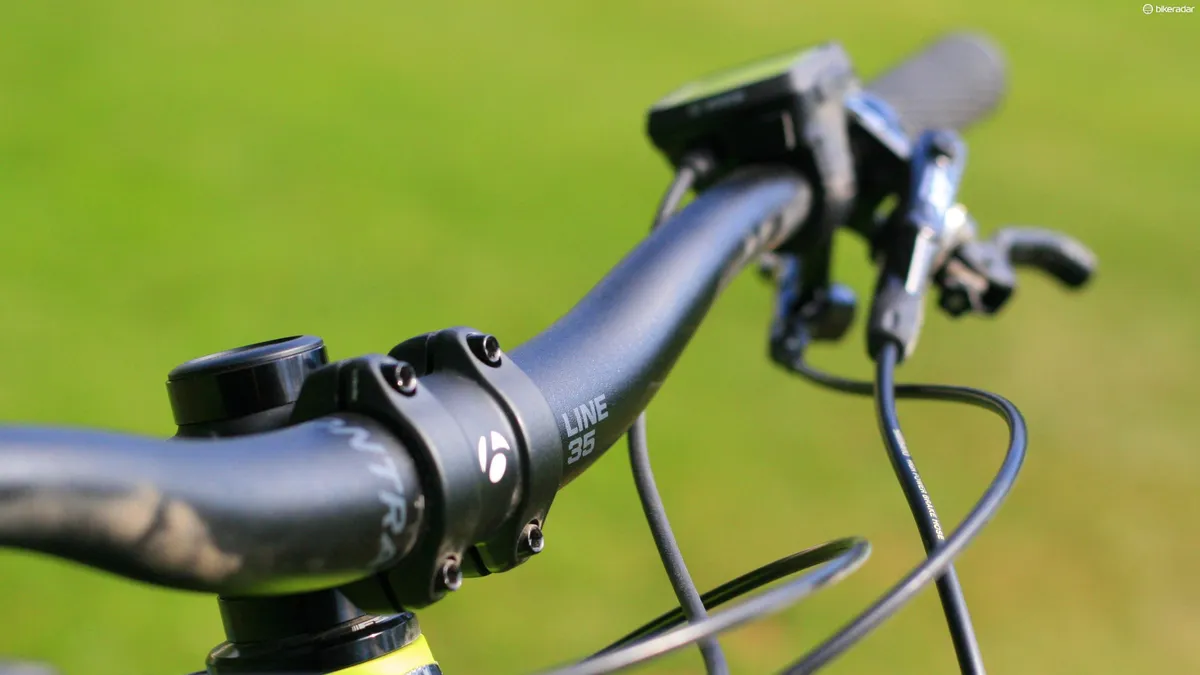
Up front there are 160mm forks, from Fox (the 36 Factory on the top model, Performance on the third-tier model), RockShox (Yari RC on model two and four in the line-up) and SR Suntour Aions on the base LT 4 model. All of the forks are rated for e-MTB use by the manufacturer.
The rear suspension uses RockShox Deluxe shocks, with the top carbon and alloy versions getting the Re:aktiv pedalling platform tune.
A range of Bontrager’s wheels are used, and all have a wide internal profile to support the 2.8in Bontrager XR4 tyres with a reinforced sidewall that comes as standard on all but the cheapest LT bikes.
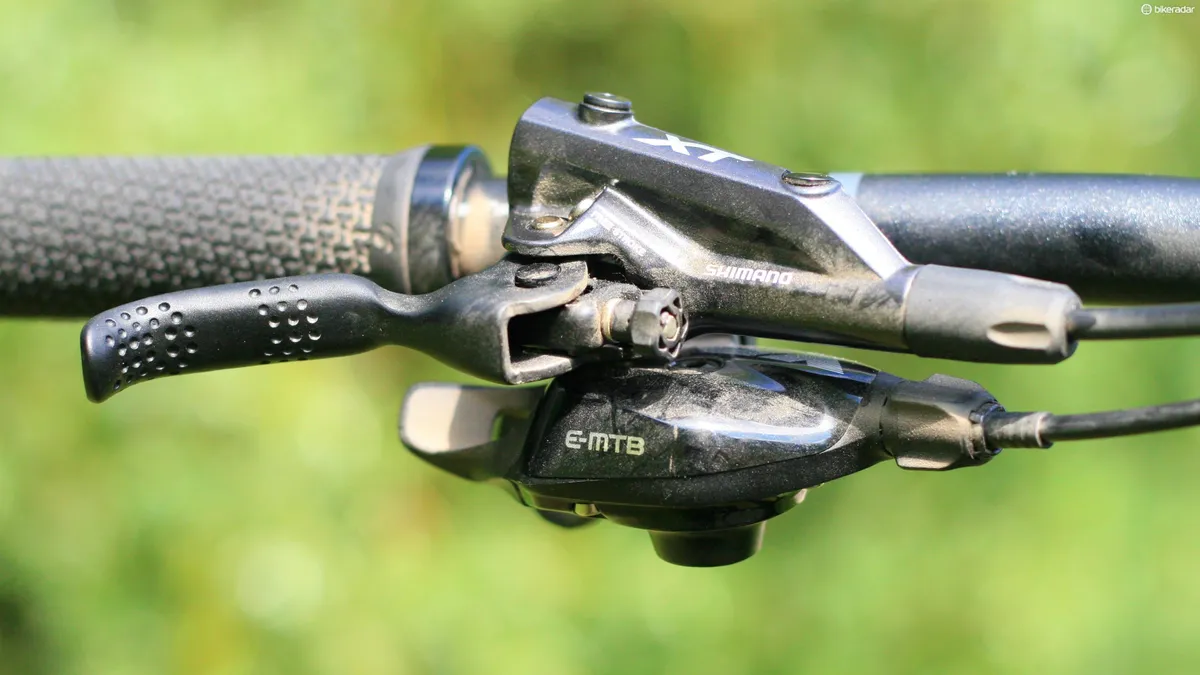
Brakes are four-pot designs across the range because Trek says these are best to offer the power required by brakes on e-MTBs. Bontrager provides the finishing kit for all of the bikes.
The two cheapest alloy bikes use Shimano 11-speed gears, while the other three use SRAM Eagle 12-speed set ups. These have been tuned with single shift levers (instead of the multi-shift thumb lever), and the new NX level 11-50t cassette, across the board. This is because it's the only 12-speed cassette rated by SRAM for e-MTB use.
Bosch’s motor is used because Trek says its global service and support network is impressive, as is its ability to meet the volumes needed by Trek.
